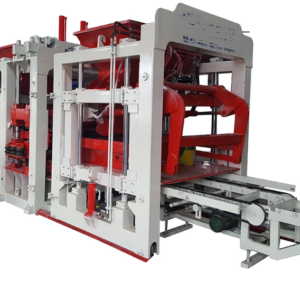Posted on August 23, 2023
How can I determine the appropriate production capacity of a concrete block machine for my construction project?
Determining the appropriate production capacity of a concrete block machine for your construction project involves considering several factors.
Here are some steps to help you determine the suitable production capacity:
Assess Project Requirements: Start by evaluating the requirements of your construction project. Consider factors such as the expected quantity of concrete blocks needed, the project timeline, and the specific block types and sizes required. This will give you a basic understanding of the production volume you need to meet.
Calculate Daily Block Demand: Determine the daily demand for concrete blocks based on your project timeline and the total quantity of blocks required. Divide the total number of blocks needed by the number of days available for block production. This will give you an estimate of the average daily block demand.
Consider Production Efficiency: Concrete block machines have different production efficiencies, which can affect the actual output. Take into account factors such as machine cycle time, setup time, and any potential downtime for maintenance or repair. Adjust the daily block demand calculated in the previous step to accommodate these factors and determine the effective daily production requirement.
Evaluate Machine Capacity: Review the specifications of concrete block machines you are considering, particularly their production capacity. Machine capacity is typically expressed as the number of blocks produced per day or per hour. Compare the machine’s capacity with the effective daily production requirement calculated in the previous step.
Allow for Flexibility: It’s advisable to allow for some flexibility in the production capacity to cater to unexpected changes or fluctuations in block demand. Consider adding a buffer to your estimated production capacity to account for unforeseen circumstances or increased demand during peak periods.
Consider Future Projects: If you anticipate future construction projects that will require concrete blocks, take those into account as well. It may be more cost-effective and practical to invest in a machine with a slightly higher production capacity if you expect increased demand in the future.
Seek Expert Advice: Consulting with experienced professionals in the industry, such as concrete block machine manufacturers or suppliers, can provide valuable guidance. They can help assess your specific project requirements and recommend the appropriate machine size and production capacity based on their expertise.
By following these steps and considering the project requirements, production efficiency, and expert advice, you can determine the appropriate production capacity of a concrete block machine that aligns with your construction project’s needs.
How can I estimate the buffer or additional production capacity needed for unforeseen circumstances?
Estimating the buffer or additional production capacity needed for unforeseen circumstances in your construction project requires careful consideration of potential factors that may affect block production. While it is challenging to predict all contingencies, here are some steps to help you estimate an appropriate buffer:
Analyze Project Risks: Identify potential risks or factors that may impact block production. These could include delays in material delivery, concrete block machine manufacturer machine breakdowns, weather conditions, changes in project scope, or unexpected increases in block demand. Conduct a thorough risk assessment to understand the likelihood and potential impact of each risk.
Quantify Risk Impact: Evaluate the potential impact of each identified risk on block production. Determine the additional production capacity or buffer required to mitigate the impact of each risk. For example, if there is a risk of machine breakdowns, consider how much additional production capacity would be necessary to compensate for potential downtime.
Consider Contingency Factors: Take into account any existing contingency factors in your project schedule or budget. These contingencies may already include a certain level of buffer for unforeseen circumstances. Assess if these contingencies are sufficient or if additional buffer capacity is needed specifically for block production.
Evaluate Historical Data: If available, review historical data from previous similar projects or industry benchmarks. Analyze the data to identify any common issues or challenges that affected block production in those projects. Use this information to estimate the potential buffer capacity needed for unforeseen circumstances based on past experiences.
Seek Expert Input: Consult with professionals who have experience in concrete block production or construction project management. They can provide valuable insights and advice on estimating the appropriate buffer capacity. Discuss the specific risks and challenges related to block production in your project, and ask for their recommendations on the additional capacity needed.
Flexibility in Production Planning: Consider incorporating flexibility in your production planning. This can involve maintaining a reserve inventory of blocks, adjusting the production schedule to accommodate unexpected events, or having the ability to increase production temporarily if required.
Cost-Benefit Analysis: Evaluate the cost implications of adding buffer capacity. Assess the trade-off between the potential risks and the financial investment required for additional production capacity. Consider the impact on project timelines, labor costs, and overall project budget when making your decision.
Remember that estimating the buffer or additional production capacity for unforeseen circumstances is inherently uncertain. It’s essential to strike a balance between mitigating risks and maintaining cost-effectiveness. Regular monitoring and reassessment throughout the project will help you make necessary adjustments to your production capacity as circumstances evolve.


